
There are many tools that can help you figure out what your ecommerce competitors are up to, and wow, are they fun to use! But first, why spy on your business competition?
Keeping an eye on what your competitors are doing for marketing and advertising is a smart way to identify what’s working, what’s not, and how effective certain approaches might be in reaching and engaging with your target audience.
Below is a list of several tools you can leverage to “spy” on your ecommerce competitors, which will allow you to:
At Agital, we analyze multiple competitors for prospective clients who request a free ecommerce analysis, and now we’re sharing some of our favorite methods with you! For illustrative purposes in the following examples, we’ll use adidas.com (as “your brand/website”), nike.com, reebok.com, and underarmour.com (as “your competitors”).
You can use the tools below to optimize your digital marketing strategy, media mix, messaging, and more. You are also invited to share this list with any decision-makers in your network looking to harness a clear, data-driven, and strategic approach to digital marketing.
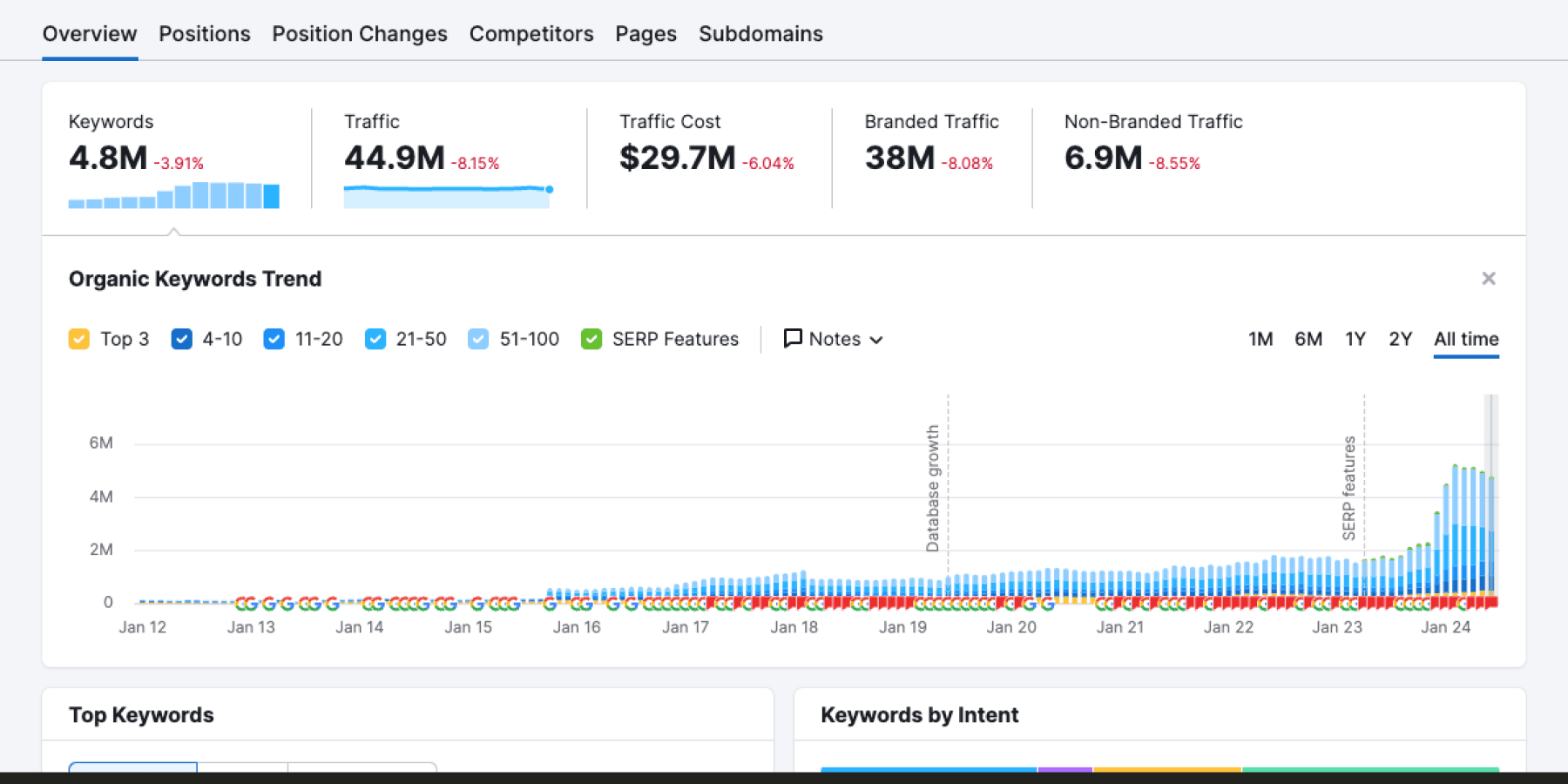
Resource: semrush.com/analytics/organic
How to use it effectively:
Master Tip: If you see a major drop in your rankings, you can compare them against a competitor to see if it looks like the cause might be an algorithmic update vs. something specific to your brand. If your keywords on page 1 are less than 20% of all, you need help with your content.
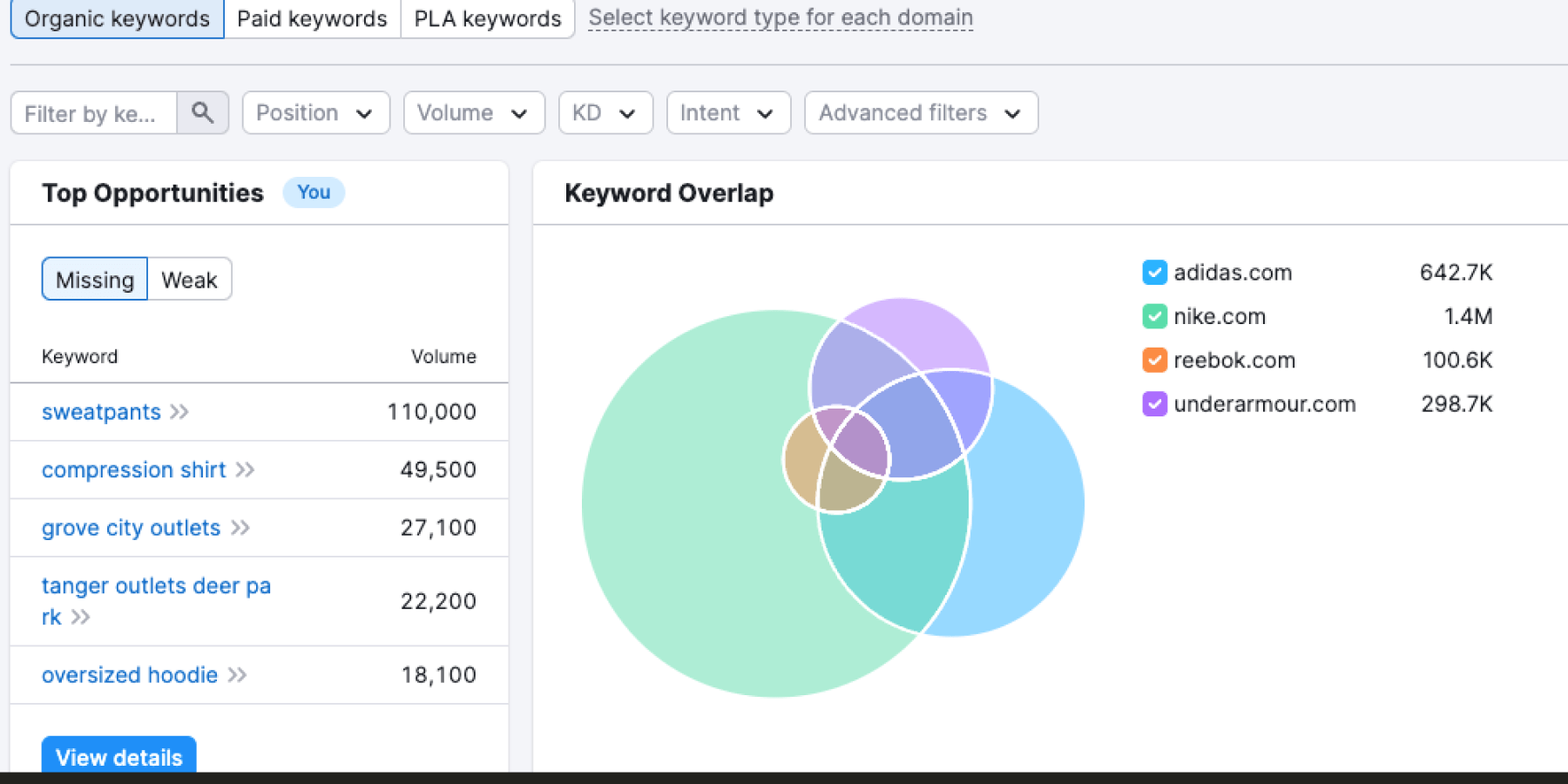
Resource: semrush.com/analytics/keywordgap → “Organic keywords”
How to use it effectively:
Master Tip: The higher the overlap in keywords, the more likely your brand is aligned with a search-based journey. It might be worthwhile to write content for your untapped keywords, especially keywords that two or more competitors are targeting.
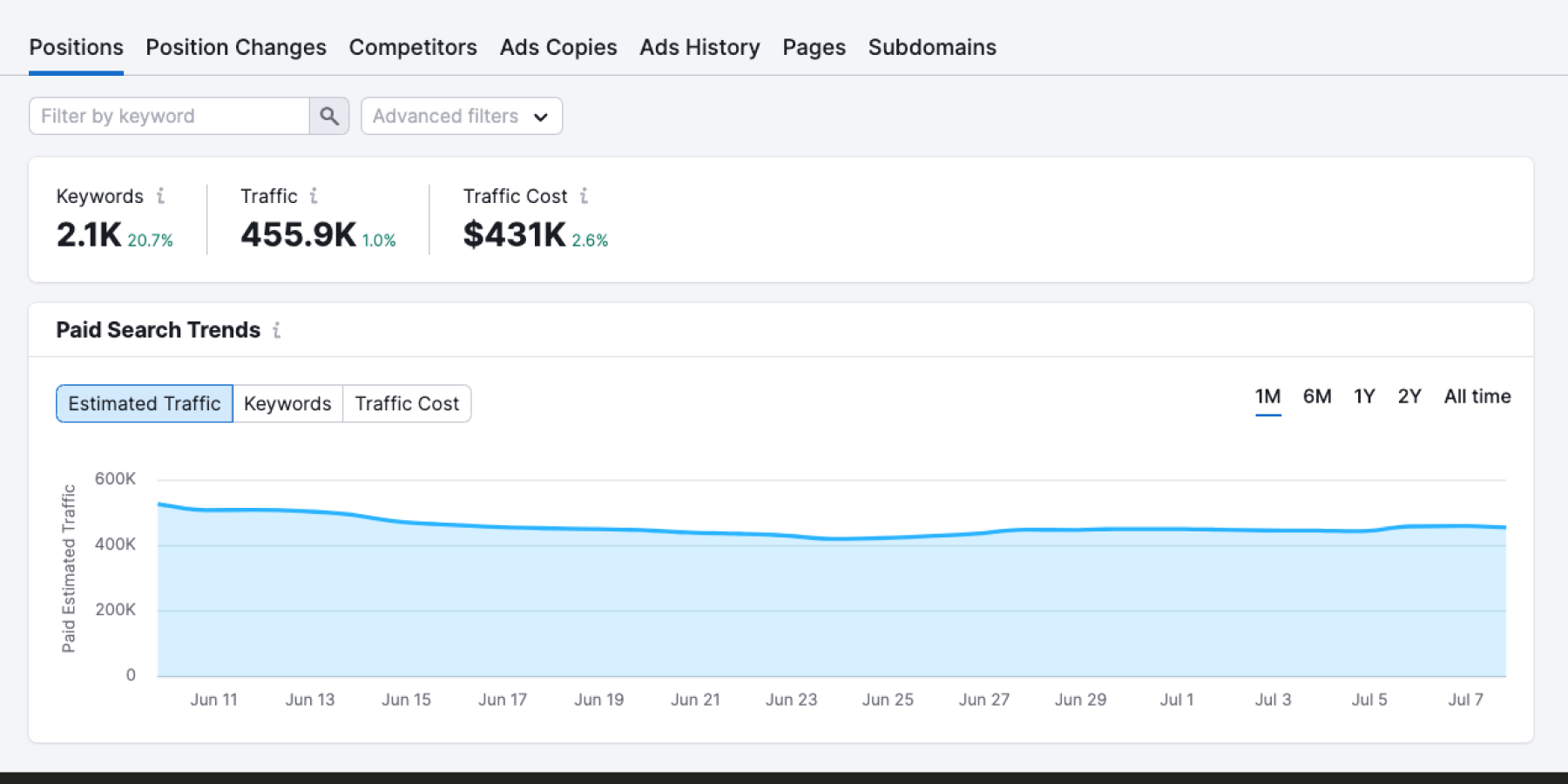
Resource: semrush.com/analytics/adwords/positions
How to use it effectively:
Master Tip: Search ads present significant opportunities for ecommerce businesses. This is a great place to emphasize your product selection, value props, customer service, and reviews.

Resource: semrush.com/analytics/keywordgap → “Paid keywords”
How to use it effectively:
Master Tip: Some ecommerce businesses underutilize search ads. Search ads are a great way to emphasize your product selection, value props, customer service, and reviews.
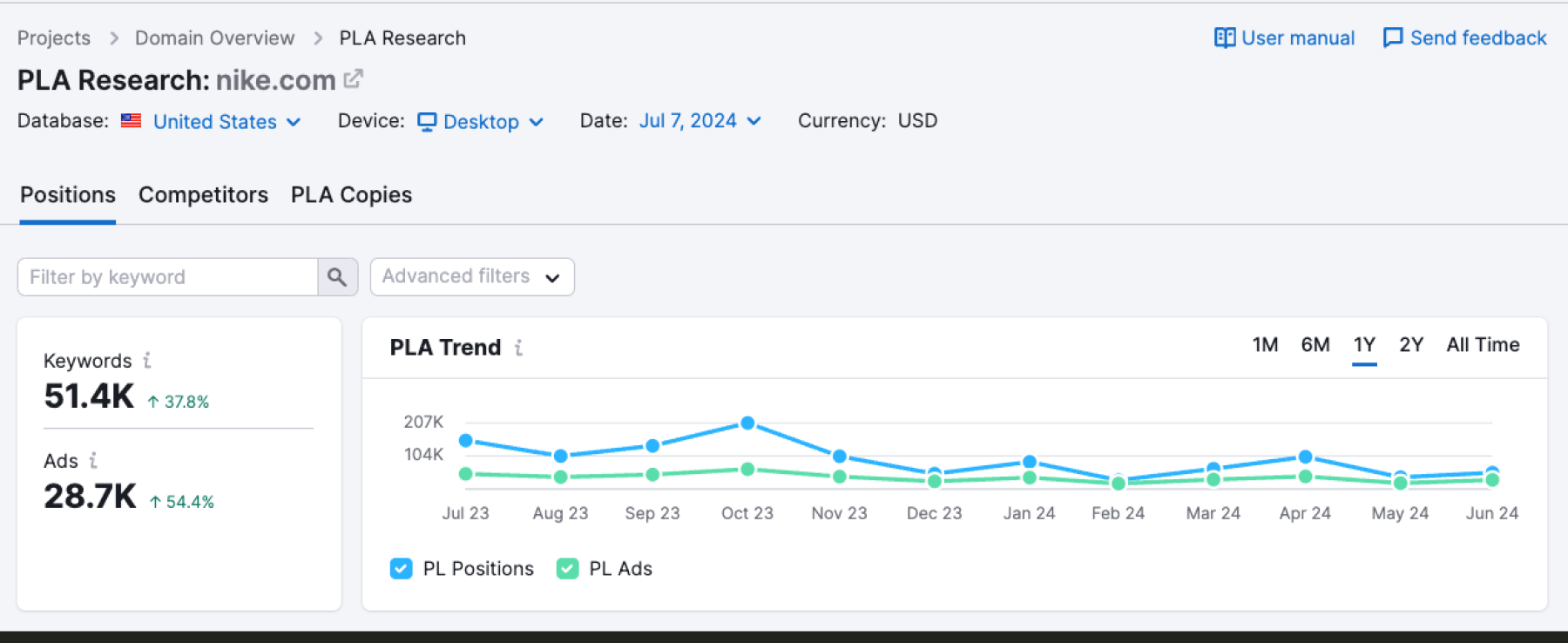
Resource: semrush.com/analytics/pla/positions
How to use it effectively:
Master Tip: Around June 2022, many accounts will see a drop in positions and ads. This could indicate that Performance Max (PMax) ads were not launched correctly. Switch to the “PLA copies” tab to see how your product mix has shifted in the most recent month versus the same time last year.

Resource: facebook.com/ads/library
Go to your competitor’s official Facebook page, click “About” → “Page transparency” → “See All” → “Go to Ad Library”
How to use it effectively:
Master Tip: More ads means more opportunity for segmentation, testing, promotions, UGC, and announcements. It’s a proxy for depth of strategy.

Resource: pinterest.com/nike
How to use it effectively:
Master Tip: 70% of Pinterest users are female, 40% have a household income over $100k. This can be a great fit for search-based journeys.

Resource: adstransparency.google.com
How to use it effectively:
Master Tip: Video ads that look like they are made in PowerPoint are likely Performance Max ads.

Resource: ads.tiktok.com/business/creativecenter/inspiration/topads
How to use it effectively:
Master Tip: Use this to help brainstorm your TikTok Ads. You can even see the level of budget and performance, which can help guide your tactics.

Resource: milled.com/nike
How to use it effectively:
Master Tip: If you are sending at a lower frequency than your competitor, it’s likely your customer lifetime value (CLV) is lower than it should be. This will impact your breakeven cost per acquisition (CPA) and hamstring your entire marketing budget in areas of awareness, consideration, and conversion.
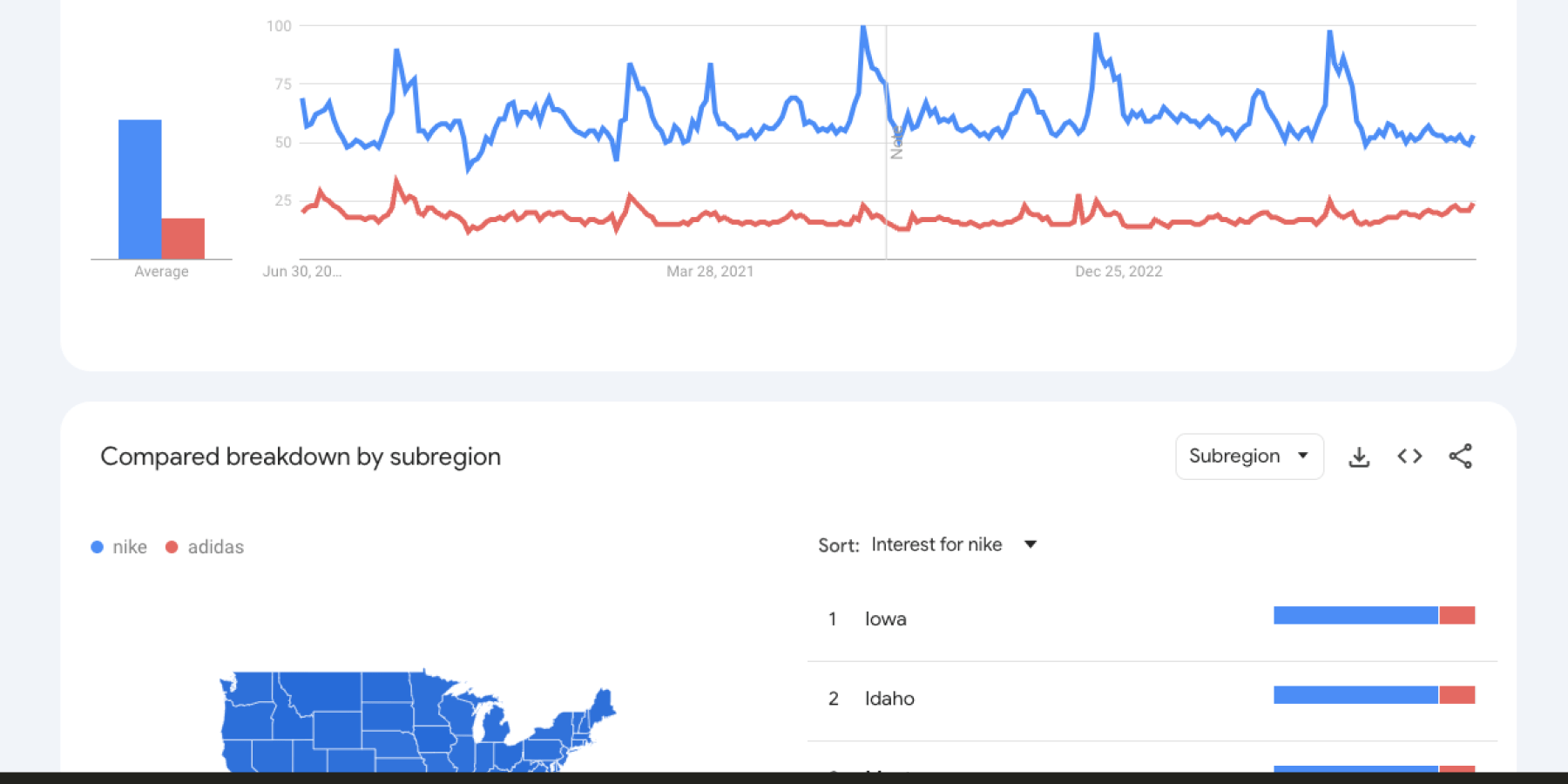
Resource: trends.google.com/trends
How to use it effectively:
Master Tip: If search patterns are similar, that means the brands are not creating their own demand—they follow a search-based journey. Otherwise, they follow a brand-based journey. Determining whether your competitors follow a search-based or a brand-based journey has implications across your marketing strategy.
At Agital, prospective clients come to us with more marketing questions than answers, including ones about how they compare to their ecommerce competitors. When you ask for an ecommerce analysis, we review where you stand in relation to your competitors to start forming an effective growth plan for you.
We include all the analyses above and more in a deep dive across your brand and several of your competitors as part of step one to truly understanding where you stand in your market. Best of all, we do it at no cost to you, because we are confident you will recognize the value of our digital marketing insights and the quality of our services. Get yours now.
